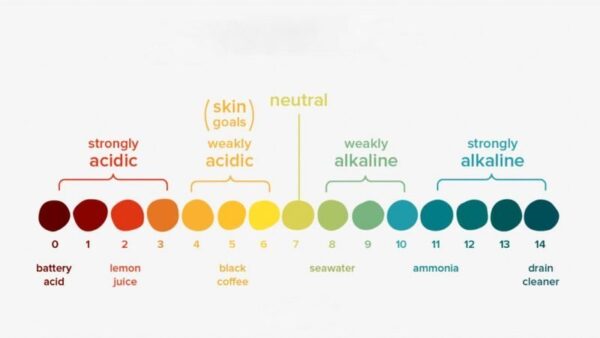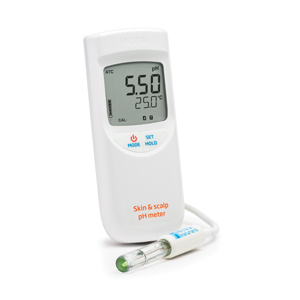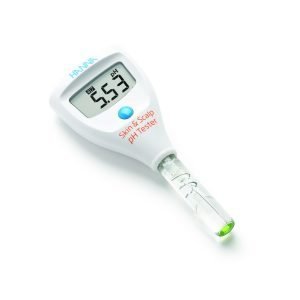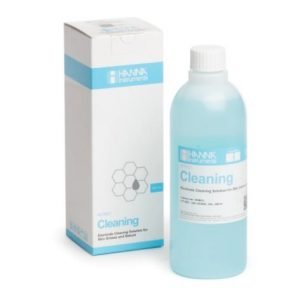Today, the cosmetic industry is booming and customers are often bombed with different information.
The Western cosmetic industry is galloping fast to catch the train of K-beauty.
It’s widely known that Korean culture is the most progressive & innovative in the cosmetic industry. The whole purpose of K-beauty skincare is to replace having the layers of foundation with a healthy, hydrated and luminous skin (“glass skin”) and that’s why we love it!
To do that, there is an extensive routine consisting of 10 steps (in average).
With so many (many!) products in the market, you will probably be in a limbo of well-known trial&error. But, what could possibly go wrong?
– damaged skin barrier
– problems with absorption
– break outs

People often take some TV commercials too serious. For example, the pH of the skin is 5.5.
Well, not always, at least not for all of us. We all live in different parts of the world, have different skin types and different diets, not to mention the effect of skincare on skin pH.
We all have different skin pH. The studies made on the numerous participants recorder a broad range of pH 4.00 to 7.00. Estimation is that ‘natural’ skin surface pH is on average 4.7, i.e. below 5.
Not only prior use of cosmetic products, especially soaps, have profound influence on skin surface pH, but the use of plain tap water, in Europe with a pH value generally around 8.0, will increase skin pH up to 6h after application before returning to its ‘natural’ value of an average below 5.0. It is demonstrated that skin with pH values below 5.0 is in a better condition than skin with pH values above 5.0, as shown by measuring the biophysical parameters of barrier function, moisturization and scaling.
Surely, you noticed certain skin changes in times of seasonal changes, and you would say it’s wheather related, and yes it is, in a way that weather conditions are actually affecting our skin’s pH levels. The same goes for nutritional habits; for example processed food, chocolate and mayo will also disbalance the pH of your skin and you will probably within days notice changes and arrival of „little enemies“.
Also, big issues caused in our overall health balance is of course stress & hormonal changes, together or alone, wreck havoc.
Changes in the pH are reported to play a role in the pathogenesis of skin diseases like irritant contact dermatitis, atopic dermatitis, ichthyosis, acne vulgaris and Candida albicans infections.
Top layer of the skin is slightly acidic (ranging from 4.4 – 6 pH) and it’s called the acid mantle. It’s your body’s first layer of defence against bacteria, viruses and harmful foreign bodies.
The acid mantle is a thin film on the skin’s surface composed of lipids from the oil glands mixed with amino acids from sweat. Along with the microbiome, it’s part of the delicate matrix that creates a healthy skin barrier.
Also the acid mantle (hence the pH) will be a breaking point between success and failure of your products.

Skin hydro-lipid barrier / Moisture barrier
Our skin is made of layers, and their purpose is to protect our body. Each of this layes has a specific pH that is keeping everything in balance.
Stratum corneum – consists of corneocytes that are bound together by lipids and keeps the toxins and pathogens from entering, but also keeps the moisture trapped inside.
When your skin barrier isn’t functioning properly (if the pH is too low – acidic, or too high – alkaline), you may be more prone to developing the following skin symptoms and conditions:
- dry, scaly skin
- itchiness
- rough or discolored patches
- acne
- sensitive or inflamed areas
- bacterial, viral, or fungal skin infections
What is common to all of us, that when we encounter a problem we try to find a quick fix. Usually acids are listed as „the angels of help“. But that will not be „overnight miracle cure“ for everybody. There are actually certain skin conditions that require more alkaline help, like for example eczema and psoriasis. With aggressive approach and big disturbances in pH we can actually worsen all of the listed problems.
Because: How you can even start to lower your pH if you don’t know the starting point?
Makes sense, doesn’t it?
– Chemicals exfoliants (popularly known as acids or actives)
There are several types, designed with different agenda, most popular& widely used:
- AHA (Alpha hydroxy acids) (citric acid /glycolic acid / mandelic acid/lactic acid / malic acid/ tartaric acid ) – pH around 3,41 – 3,83
often advertised as targeting whiteheads
- BHA (beta hydroxy acids) (Salicylic acid) – pH mainly ranges 2.97
often advertised as targeting blackheads
- PHA (Polyhydroxy acids) (gluconolactone/galactose/lactobionic acid
targeting scarring, brightening – pH ranges 3,80
- C vitamin (ascorbic acid) – brightening effects, anti-aging
– special case also because C-vitamin serums themselves have a famously un-stable pH, and only if they are kept/stored in the appropriate way they can keep their „special powers“ and make the „miracles happen“ at pH ranging from pH 2.40 and 3.20
Acids ab(use) and absorption

So, when you have a line-up of a 10-step skincare routine in front of you, what will be causing them to absorb or not?
It depends actually on many factors, involving your skin barrier condition, and of course pH.
Effectiveness of absorption of several types of AHA/BHA acids:
Salicylic acid as well as Glycolic acid has the best absorption ratio, (almost total) in lower pH formulations, in formulations close to pH 7 they have almost 0 effectiveness.
Of course, going to low, mixing it up and going YOLO, you will actually disrupt your skin barrier and possibly (surely) get chemical burns.
Not only that, but the following steps toner/essence/ampoule/serum also show that their absorption in your skin is very much depending on pH because if the pH is not properly balanced, skin cells will have a lower absorption percentage of ingredients in your products.
So, with „blind“ trial&error you can actually lose a pile of money splurged on expensive skincare products which will not have their best absorption ratio and are actually just there „sitting“ on your skin surface waiting to be washed off.
To avoid risky situations, you can take a safe bet and go to a dermatologist, aestethician or a beauty saloon, where every better equipped saloon will take the pH measurement of your skin and you will walk on a safe road of healthy skin or you can very easily do it at home with a Skin pH meter or Skin pH tester.

Designed to bring simplicity to pH testing of flat surfaces, the HI99181 Skin pH Portable Meter is designed for surface measurements. The specialized HI14143/50 probe features a glass body, flat tip, and open junction making it ideal for the non-destructive pH testing of skin surfaces.
- ±0.02 pH accuracy
- Comes with all the necessary solutions and batteries- everything you need to get started measuring right away.
- Specialized for the direct pH measurement of skin and scalp.
For the ones that have knowledge and confidence to do at-home-miracles we have a convenient pH tester, easy to fit any purse

Designed to bring simplicity to pH testing in the medical field, the HI981037 Skin & Scalp pH Tester is engineered specifically for measuring the pH of the skin and scalp. The built-in probe features an open junction, flat tip, and glass body making it ideal for measuring the pH of skin surfaces.
- ±0.2 pH accuracy
- Comes with all the necessary solutions and batteries- everything you need to get started measuring right away.
- Specialized for use in the medical and cosmetic application.
- Travel size

The HI70621L is a neutral, effective cleaning solution that is specially formulated for use in applications were a pH electrode can be coated with skin grease and sebum. Electrodes can become dirty from use and will produce inaccurate results even as they read correctly in a pH buffer. Hanna’s cleaning solutions eliminate impurities and residues that are left on electrode surfaces when immersed in samples during measurement and stored incorrectly. Hanna suggests cleaning the bulb and junction of your electrode on a regular basis to ensure that the probe is always clean and prevent any clogging of the junction.
- Specially formulated cleaning solution to remove skin grease and sebum from a pH electrode
- Air tight bottle with tamper-proof seal to ensure quality
- Expiration date and lot number clearly marked on the bottle
In the end, I will refer to a Baz Lurmann song and most importantly, whatever you do, always wear a sunscreen!
Author: Nives Vinceković Budor, mag.ing.chem.ing.
Sources:
https://www.medicaljournals.se/acta/content_files/files/pdf/93/3/3854.pdf
https://www.ceradan.com/advanced/skin-ph-acid-mantle/
https://www.healthline.com/health/skin-barrier#what-is-it
https://pubmed.ncbi.nlm.nih.gov/18489300/
https://pubmed.ncbi.nlm.nih.gov/16864974/
https://www.healthline.com/health/whats-so-important-about-skin-ph






